The World's Best 10 Diving Destinations Of All Time
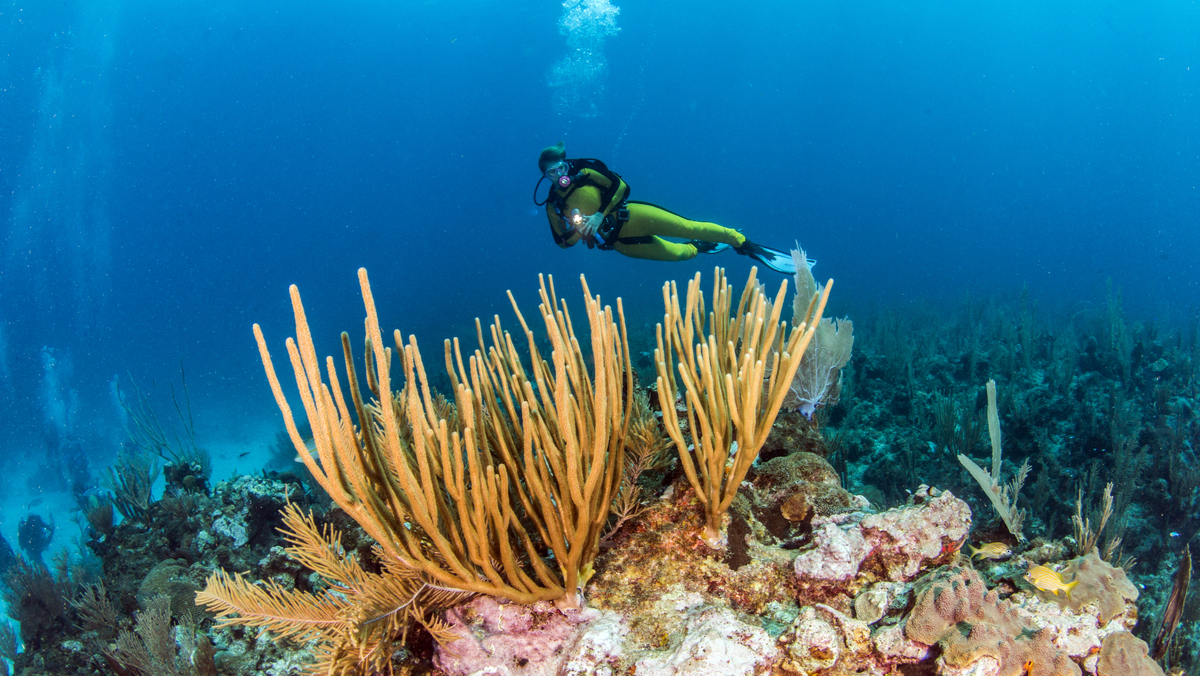
Quick Jumplinks to Navigate
Diving is an unparalleled experience that lets you enter into a world that is so surreal it often surpasses even our wildest imaginations. Diving deep into the underwater world, swimming alongside fishes and pretending to be one of them, soaring past majestic sea creatures and getting more than just a mere sneak peek into this mysterious world is exhilarating.
For those of you who haven’t experienced this magic yet, this article will be your ultimate guide to explore the deep waters. For the rest of you who have tasted the feeling already, we promise you, these places will translate into your bucket list. So here we go, diving straight into the world’s best diving sites that’ll make you go backpacking soon.
Here are some of the world’s best 10 diving destinations of all time:
1. Australia

With the world’s largest and healthiest coral reef system, Australia is revered for a truly magical place. It is home to the world’s most diverse sea world with over 1500 species of fish, whales, sharks, porpoises and giant sea turtles. This ultimate diving destination is majestic, intriguing and just a little bit terrifying at times.
Dive Deep: Most Popular Dive Sites:
- Ribbon Reefs, Northern Great Barrier Reef – One of Australia’s most remarkable natural gifts, the Great Barrier Reef is blessed with the breathtaking beauty of the world’s largest coral reef. The reef contains an abundance of marine life and comprises of over 3000 individual reef systems and coral cays.
- Osprey Reef – This is perhaps its most famous dive site for its shark feed. You can also watch Manta rays swim past this site.
- SS Yongala – It is the Great Barrier Reef’s signature wreck ship that went down during a 1911 cyclone. Everything is supersized here – sea snakes the size of your bicep and sea turtles so big they look prehistoric. The wreck is colourful and worth several dives to see it all.
- The Whitsundays – Perfect for diving as well as activities like sailing and island exploring
What’s so special about it:
Made up of nearly 2900 individual reefs, 600 continental islands and 300 coral cays, the Great Barrier Reef is the world’s most diverse and largest coral structure. It is the only living structure on earth that can be seen from outer space.
Best Time to Dive:
The best time to dive in Australia is between August and December but you can dive here all year round. The water temperature ranges from 22°C in June rising to 28°C in March. Although January, February and March are the warmest months, they are also the wettest. March and April is also a good time to go if you plan on swimming with big pelagics like whale sharks.
Check Out: Places to Visit in Australia
Suggested Read: Things to Do in Australia
2. Hong Kong
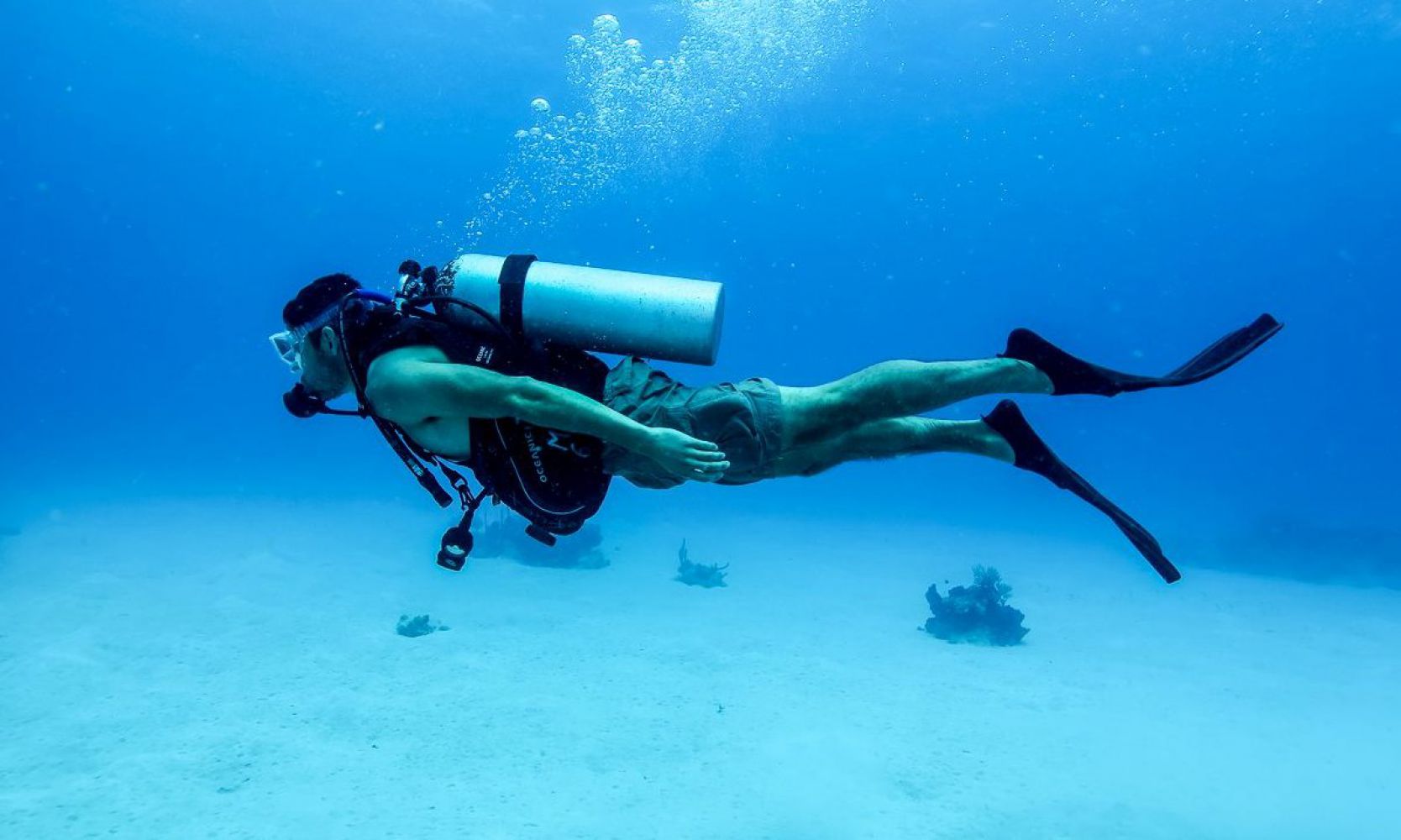
 Hong Kong’s underwater life is as interesting and alluring as its landscape above waters. Its waters consist of around 25 per cent of China’s marine life of more than 6,000 species of marine animals and hundreds of varieties of corals.
Hong Kong’s underwater life is as interesting and alluring as its landscape above waters. Its waters consist of around 25 per cent of China’s marine life of more than 6,000 species of marine animals and hundreds of varieties of corals.
Divers are in for a visual treat as they swim among hundreds of colorful marbled stingrays, frogfish, seahorses, nudibranchs, barracuda, etc. There are wrecks and some amazing coral gardens waiting to be explored
Dive Deep: Most Popular Dive Sites:
- Sai Kung: One of the most popular diving spots in Hong Kong; Sai Kung has lots to offer to divers. Its calm waters house sweetlips, goatfish, moray eels, cardinalfish, butterfly rays, seahorses, etc. Don’t miss to see the huge varieties of coral gardens at Ninepin Island while here.
- Bluff Island: Locally known as Ung Kong Won, this is a shallow sandy bay bounded by coral reefs. See the famously aggressive anemonefish or ‘Nemo’ snapping their jaws along with sea apples, Tozeuma shrimps, Xeno crabs, gorgonians, etc.
- Ping Chau Island: This is one of the most unique diving destinations known for its sedimentary rock formations where you can explore several hard and soft coral reefs, colorful anemones, clownfish, and varieties of turtles.
- Lobster Bay: One of the most interesting diving sites, its floors hide a few boats and even car wrecks! See artificial coral reefs in vibrant colors among species of barracuda, turtles, and seahorses.
What’s so special about it:
Hong Kong is known as the world’s diving training ground. Its shallow calm waters are perfect for beginners to learn this amazing watersport. Its amazingly diverse marine life, varieties of corals, unique rock formations, wreck diving sites attract divers from all over the world.
Best Time to Dive:
The best time to dive in Hong Kong is from March to July and September to November. These are the months when the visibility is the highest and the marine life is flourishing.
The water temperatures range between 20°C to 25°C, making them comfortable and warm enough to spend time in.
Also Checkout: Alluring Places to Visit in Hong Kong
Suggested Read: Amusing and Fun Things To Do in Hong Kong
3. Galapagos Islands

Imagine a realm where penguins swim in equatorial seas, no one bats an eye at four-eyed fish, and iguanas are found eating algae submerged in the saltwater. Imagine dolphins leaping about in phosphorescent water and becoming the new friend of a playful sea lion pup.
Open your eyes… you are imagining diving the Galapagos. An internationally acclaimed dive site in the world, this unique cluster of 20 volcanic islands truly are a marvel to explore.
Dive Deep: Most Popular Dive Sites:
- El Arco, Darwin Island – One of the world’s top 10 dive sites, you encounter schooling hammerheads, whale sharks, spotted eagle rays, prowling Galapagos and silky sharks.
- El Arenal, Darwin Island – The distinctive Darwin’s stone arch is just above the water and the dive site slopes off the arch.
- Roca Redonda, Isabela Island – Off the north coast of Isabela, this dive site is the tip of an underwater volcano that rises from the seafloor and emerges as an island. You’ll find Galapagos sharks, schools of hammerhead sharks, barracudas, sea lions and numerous sea horses in the shallows
- Cape Douglas, Fernandina Island – This dive site is a great spot to watch penguins “fly” past. Done as a drift dive, you can also see fur seals and Galapagos sea lions mingling with munching marine iguanas.
What’s so special about it:
Home to an array of marine life found nowhere else, these waters are best explored with liveaboard diving expeditions. It’s also the place that Charles Darwin visited in the 1800s when he came up with the theory of evolution.
Best Time to Dive:
Diving the Galapagos Islands can be done year-round, but the water temperatures vary depending on the time of year, the dive site you choose and the depths you dive. Surface temperatures range from 18-30 degrees Celsius from September through November being the coldest months and February through April offering the warmest temperatures.
Also Checkout: Museums in Hong Kong
4. Indonesia
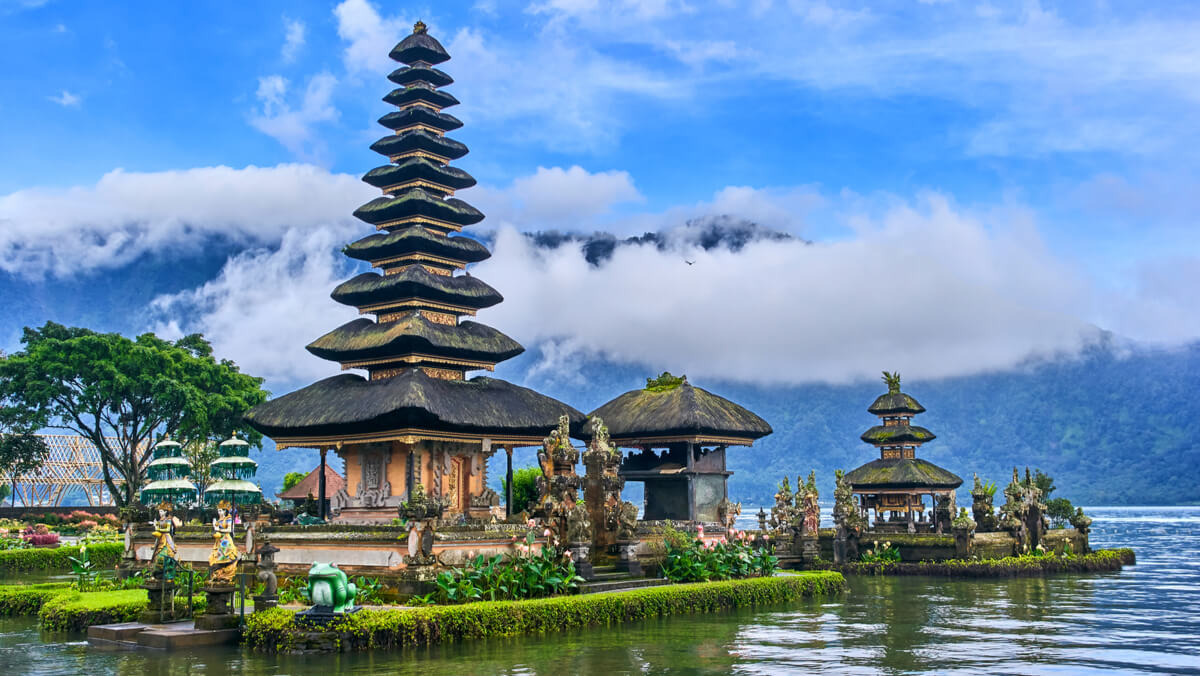
 With one of the longest coastlines in the world, there are so many bright and colourful dives to choose from. What’s cool, is that Indonesia is a part of the Coral Triangle of the world, which means that this one country has 20% of the world’s coral reefs, deep water trenches, sunken wrecks, and underwater volcanic mountains, all waiting to be explored.
With one of the longest coastlines in the world, there are so many bright and colourful dives to choose from. What’s cool, is that Indonesia is a part of the Coral Triangle of the world, which means that this one country has 20% of the world’s coral reefs, deep water trenches, sunken wrecks, and underwater volcanic mountains, all waiting to be explored.
Dive Deep: Most Popular Dive Sites:
- Jakarta – Visit Thousand Islands and discover white sand beaches and some interesting wreck dives. What better way to relax away from the city than by submerging yourself in turquoise waters on colourful coral reefs?
- Bunaken – Located in North Sulawesi, the “Land of Smiling People”, Bunaken’s colossal walls, clear blue water and diverse marine life impresses even the most seasoned of divers.
- Lembeh – Known as the “Critter Capital of the World” the Lembeh Strait is home to an abundance of unique and rare marine life where nothing is quite as it seems. Be prepared to find the most unusual of critters in the most unexpected of places.
- Bali – Known as the island of the Gods, Bali’s diverse reefs, rich culture and stunning scenery will leave you spellbound.
- Komodo – The land of the dragons promises adventure and excitement. The marine life combined with kaleidoscopic coral reefs, pelagic, including reef sharks, manta rays and passing eagle rays will leave you wishing for more dives.
- Raja Ampat – Hundreds of tiny islands and pinnacles breach the surface of the aquamarine waters which are home to everything from pygmy seahorses to manta rays.
- Pulau Weh – Pulau Weh reefs are full of colour, alive with action and teeming with life. The hunters are being hunted, the smaller reef fish seek shelter in the coral crowded reef and before you know it another shark passes by.
- Gili Islands – These three tiny islands offer a bohemian vibe, laid back atmosphere and a good variety of dive sites.
- Lombok – The island of Lombok has everything from a towering volcano, rugged cliffs to picture-perfect white-sand beaches. Underwater there are pretty coral gardens and staggering pinnacles which are known to attract seasonal hammerheads.
- Nusa Lembongan – This small island is famous for it’s chilled out atmosphere, stunning scenery and legendary surf breaks. Dive sites are predominantly located around the neighbouring Nusa Penida with manta rays and a vibrant reef world.
Best Time to Dive:
The best time and weather to dive in Indonesia are during the dry season of April to December. But it is generally alright to dive all year round in Indonesia.
Popular Read: 101 Best Places to Visit in Indonesia
Also Read: 101 Best Things to Do in Indonesia
5. Maldives

 The coconut palm and the yellow-fin tuna, symbols of the Maldives, say a great deal about this nation of more than a thousand islands. Blessed with an abundant underwater world of manta rays, bull sharks, parrotfish, sea turtles and a colourful world of corals, Maldives is one of the best destinations for scuba diving in the world.
The coconut palm and the yellow-fin tuna, symbols of the Maldives, say a great deal about this nation of more than a thousand islands. Blessed with an abundant underwater world of manta rays, bull sharks, parrotfish, sea turtles and a colourful world of corals, Maldives is one of the best destinations for scuba diving in the world.
Dive Deep: Most Popular Dive Sites:
- Fotteyo Kandu, Vaavu Atoll – This highly-rated dive site has vibrant coral and fish, but also includes caves, overhangs and swim-throughs filled with yellow soft coral and a few black coral bushes at deeper depths. You may see reef sharks, jack and tuna, plus large schools of snapper fish here.
- Kuredu Express, Lhaviyani Atoll – This site gets its name from the strong current that flows through the channel. Cruise along one of the terraces located at different depths and watch the reef sharks, eagle rays, tuna, stingrays and barracuda go by.
- Okobe Thila, North Male Atoll – This site consists of three main pinnacle sections ranging from 30 feet to165 feet in length. Because there is always some current, you normally spiral up and around. Look for tuna, white-tip reef sharks and bannerfish in addition to the healthy coral.
- Kandooma Thila, South Male Atoll – This large teardrop-shaped pinnacle has dramatic scenery and prolific fish life. The walls are covered with soft corals and patrolled by schools of red bass and big-eye trevally. You can swim with grey sharks, white-tip sharks and eagle rays.
- Broken Rock, South Ari Atoll – This unique formation has a canyon that breaks the reef in two. Look for large fan corals in the canyon, Napoleon wrasse, turtles, scorpionfish and for moray eels on the reef.
- Kudarah Thila, South Ari Atoll – This marine protected area has a small reef full of soft corals and abundant fish life. Bring a dive light to explore the arch and a large overhang that make the dive unique.
What’s so special about it:
The Maldives is one of the only places in the world where you can spot majestic manta rays swim so close to you. It is also known to have 26 different shark varieties swim in these waters.
Best Time to Dive:
It is possible to dive in the Maldives all year round: The best visibility and dry weather is from December to March though. The Wet Season with rain, winds and waves runs from May to August reducing the visibility, but diving is still good. It is usually a heavy short rainfall followed by sunshine.
Suggested Read: 101 Amazing Places to Visit in the Maldives
You May Also Like: 50 Thrilling Things to Do in Maldives
6. Belize

As the saying goes, big things sometimes come in small packages. With Belize – the second smallest and least populated nation in Central America packs a hemisphere’s worth of adventure within its borders.
Located between Mexico and Guatemala, Belize is the perfect destination for exploration, relaxation and romance. With more than 400 islands, white sandy beaches, the longest barrier reef in the western hemisphere, Belize is a world-class scuba diving destination.
Dive Deep: Most Popular Dive Sites:
- Ambergris Caye – Just offshore from the quaint village of San Pedro is Hol Chan Marine Reserve, one of the coolest dives in Belize. It’s a strictly enforced marine park situated at a deep cut in Belize’s barrier reef. Abundant marine life, healthy corals and throngs of grouper, snapper, barracuda and jacks will surround you here.
- The Blue Hole – You’ve probably seen aerial shots of Belize’s signature dive. At more than 1000 feet across and 450 feet deep, this spectacular hole-in-the-reef dive has dangerous bull sharks and fascinating stalactite and stalagmite formations.
- The Elbow, Turneffe Atoll – This site has a remote, pristine quality that makes you expect big animal action and stunning reefs. Done as a drift dive, the water movement attracts a variety of schooling fish like crevalle and horse-eye jacks. Also look out for barracuda, cubera snapper, Atlantic spadefish and several species of sharks.
- Long Caye Wall, Glovers Atoll – A top dive site where you’ll find very lush corals growing in the reef. Watch for schools of jacks, tarpon and Atlantic spadefish out in the deep blue. In the sandy shallows, you may find southern stingrays and eagle rays along with garden eels.
- Silk Cayes Canyon – South of Belize City, there are low patch reefs mixed with small coral outcrops that form interesting reef structures near the edge of the drop-off. Strange grey triggerfish and reef sharks like to cruise this area.
- Stann Creek District – This is where the coast starts curving away from the barrier reef. This is also ground zero for whale shark encounters at sites off Gladden Spit.
What’s so special about it:
The Great Blue Hole in Belize, named by French explorer Jacques Cousteau is a natural wonder of Belize formed 100,000s of years ago. It has a huge diversity of marine world with great sharks and rock formations in its interiors. Day trips to this huge sinkhole are a common sight as well as some professional diving expeditions.
Best Time to Dive:
Visit Belize from late November to mid-April during the country’s dry season. This season experiences a lot of tourists but might as well explore Belize at its best and clearest waters.
Recommended Read: Festivals in Hong Kong
7. Fiji Islands
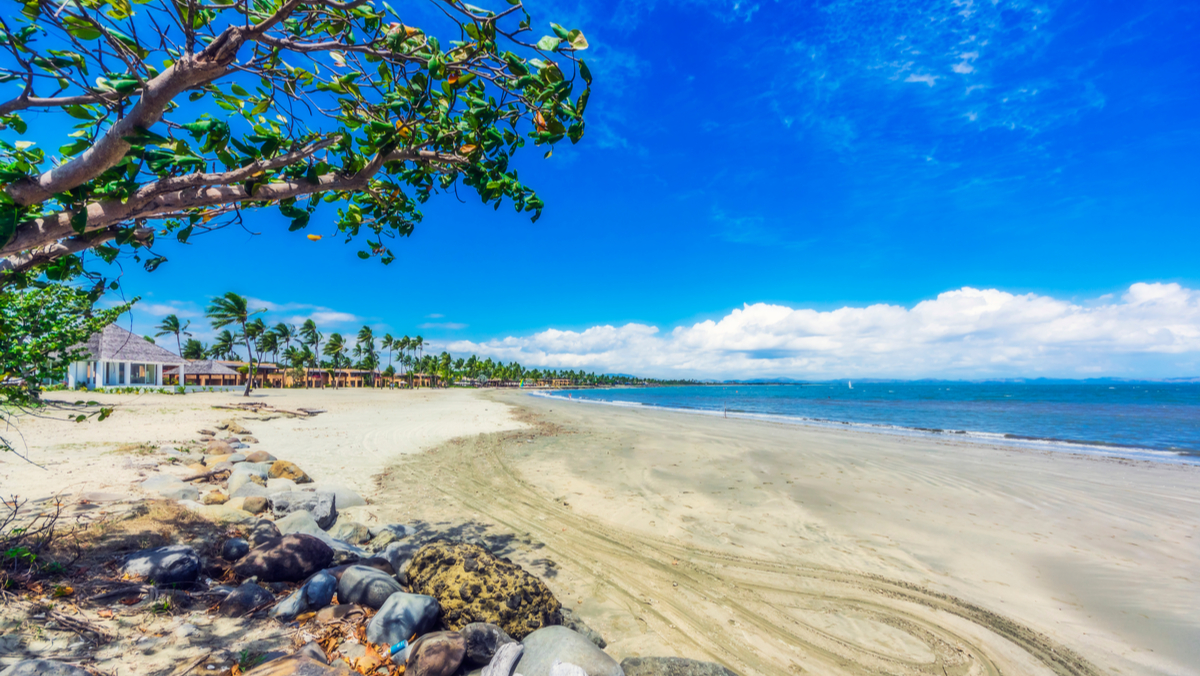
Diving in Fiji will take you to another world of vivid turquoise waters, abundant with beautiful corals, teamed with an amazing variety of colourful tropical fish. Choose a relaxing dive in the calm inner reef waters or explore the famous outer Malolo Barrier reef where dolphins, turtles and large pelagic fish will be your dive companions.
Known as the “soft coral capital of the world”, Fiji also has wall dives, swim-throughs, caverns, canyons and incredible shark encounters that will make your experience here truly enthralling.
Dive Deep: Most Popular Dive Sites:
- The Great Astrolabe Reef, Kadavu – This is the world’s 3rd largest barrier reef and the largest living organism in the South Pacific. It is also one of the less-visited islands of Fiji which is precisely the reason why you should go there. No big resorts and fast food outlets here. Instead, diving here is completely in tune with nature and where the true local culture and warmth shines through.
- Somosomo Strait, Taveuni – The Rainbow Reef is located in the narrow passage between Vanua Levu and Taveuni and includes the famous Great White Wall. You can swim past brilliant displays of white, purple and yellow soft corals with colorful sea whips, gorgonian fans, sponges and crinoids.
- Suncoast Fiji – Between Fiji’s two main islands, lies some spectacular and exciting diving with a huge array of marine life, from tiny fish to large predators. Beautiful soft and hard corals also are plentiful here.
- Shark Reef Marine Reserve, Pacific Harbour – Regarded by some as the best shark dive location in the world, you can see more than eight shark species – bull sharks, tawny nurse sharks, white-tip, black-tip and grey reef sharks, sickle in lemon sharks, Silvertips and the occasional tiger shark.
- Yasawa Islands – The Yasawa Island Group located north-west of Nadi, is rich with unique underwater topography, healthy hard corals and an abundance of fish life.
- Coral Coast – This area offers a wide range of diving including great boat dives with stunning hard and soft corals. You can also swim and discover the beauty of the giant sea turtles here.
- Beqa Lagoon – Situated off Pacific Harbour, this large lagoon has numerous dive sites catering to divers of all levels. Dive sites here are full of colorful reefs alive with tropical fish and multihued soft coral covered pinnacles. The water is generally calm, clear and warm.
- Namena Marine Protected Reserve, Savusavu – This magnificent barrier reef is populated by brilliant soft corals, invertebrates and hard corals. It hosts several dive sites with bommies and pinnacles.
What’s so special about it:
With around 1000 species of fish and several hundred types of coral and sponges, Fiji offers a unique diving experience. Apart from which it is also known as being the “Best shark dive in the world”.
Best Time to Dive:
The dive season is all year round. The winter months from April to October represent the main season for scuba diving in Fiji in terms of tourists visiting, although the visibility tends to peak between July and December when the water is cooler. You can also dive during the summertime in Fiji from November to April when the seas are the warmest.
Check Out: Night Markets in Hong Kong
8. Egypt, Red Sea
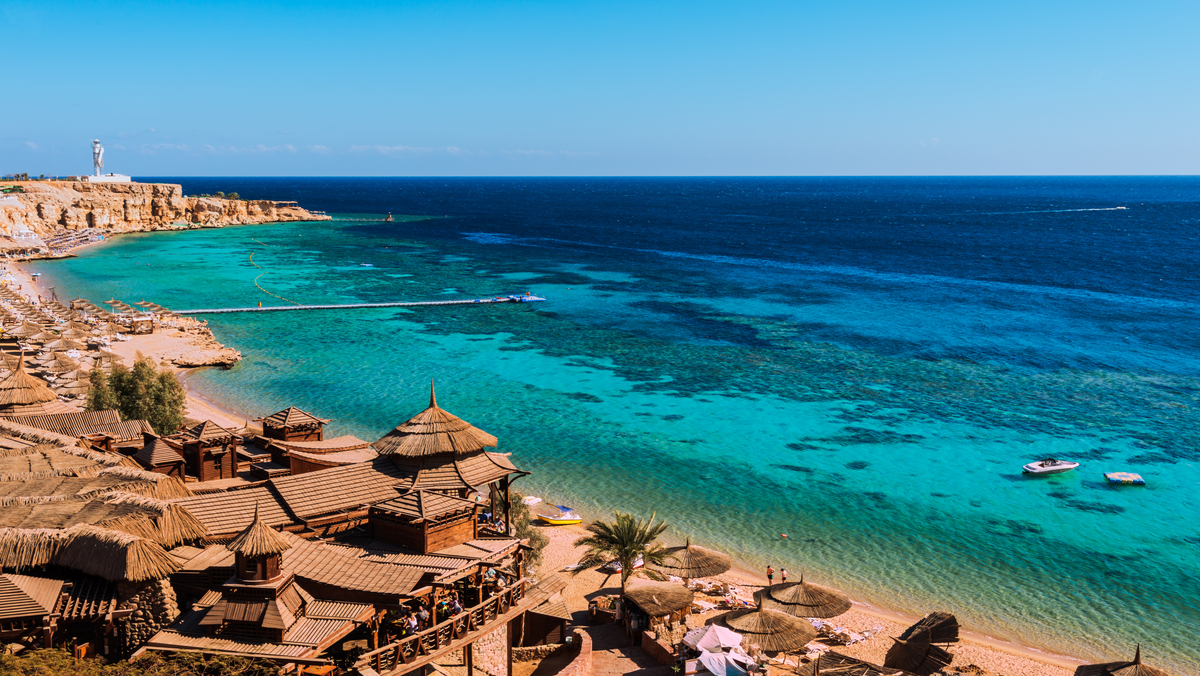

Egypt is much more than ancient monuments and pyramids. It’s a cruise down the Nile, a luxury hotel and hot nightlife, it’s a vast invigorating desert and, especially for scuba divers, it’s the Red Sea. Just beyond the shore lie cool, azure waters, beautiful coves, millions of fish, fantastic visibility, sheltered reefs, towers, pinnacles, walls, coral gardens and wrecks. They all send a siren call to scuba divers and mark the Red Sea as a world-class scuba diving destination.
Dive Deep: Most Popular Dive Sites:
- Taba: Pharaoh’s Island – Situated in the northern reaches of the Gulf of Aqaba, this area is noted for fascinating endemic marine life – frogfish, which may be one of the oldest fish. Once a Phoenician port, a restored castle overlooks the relatively uncrowded dive sites. Small pinnacles, healthy coral, schools of bream and batfish and the ubiquitous moray eels make it a great place for topside exploration and snorkelling too.
- Dahab: The Blue Hole – Plunging to 430 feet, this is one of the most famous dive sites in the world.
- Sharm el-Sheikh: Straits of Tiran – Situated at the mouth of the Gulf of Aqaba and washed by strong currents, these reefs are favourite haunts for marauding jacks, barracuda and sharks that prowl the reef edges on the lookout for their unwary, or injured, smaller cousins.
- Sharm el-Sheikh: Ras Mohamed National Park – The first Egyptian National Park is still one of the best. This protected area can be accessed by a day trip or liveaboard dive boat. At two of the featured dive sites, Shark and Yolanda reefs, currents are often significant which makes drift dives common.
- Hurghada: Giftun Island – This marine reserve is characterized by steep drop-offs, fabulous coral reefs and encounters with barracuda, tuna and even bigger pelagic species. That’s if you can tear your eyes away from the gorgonians and marine life that populate the caverns and ledges. The frequently strong currents often dictate drift dives.
- Safaga: Seven Pillars – In Soma Bay, seven coral pillars rise to the surface from about 45 feet of depth. Many reef fish, including Napoleon wrasse, pufferfish and lionfish, call the area home. It’s also a well-known night diving spot.
What’s so special about it:
The Red Sea is considered to be one of the 7 Wonders of the underwater world, harbouring more than 1,000 species of invertebrates and over 200 species of soft and hard coral.
Best Time to Dive:
Egypt is a fine choice for diving any time of year; from June to August the water can reach 30°C but it falls to a chilly 22°C in February. Whale shark season is from the end of May until the end of July when this majestic creature can be spotted mainly in the northern Red Sea.
Recommended Read: 101 Beautiful Places to Visit in Egypt
Suggested Read: Things to Do in Egypt
9. Palau (Republic of Palau)
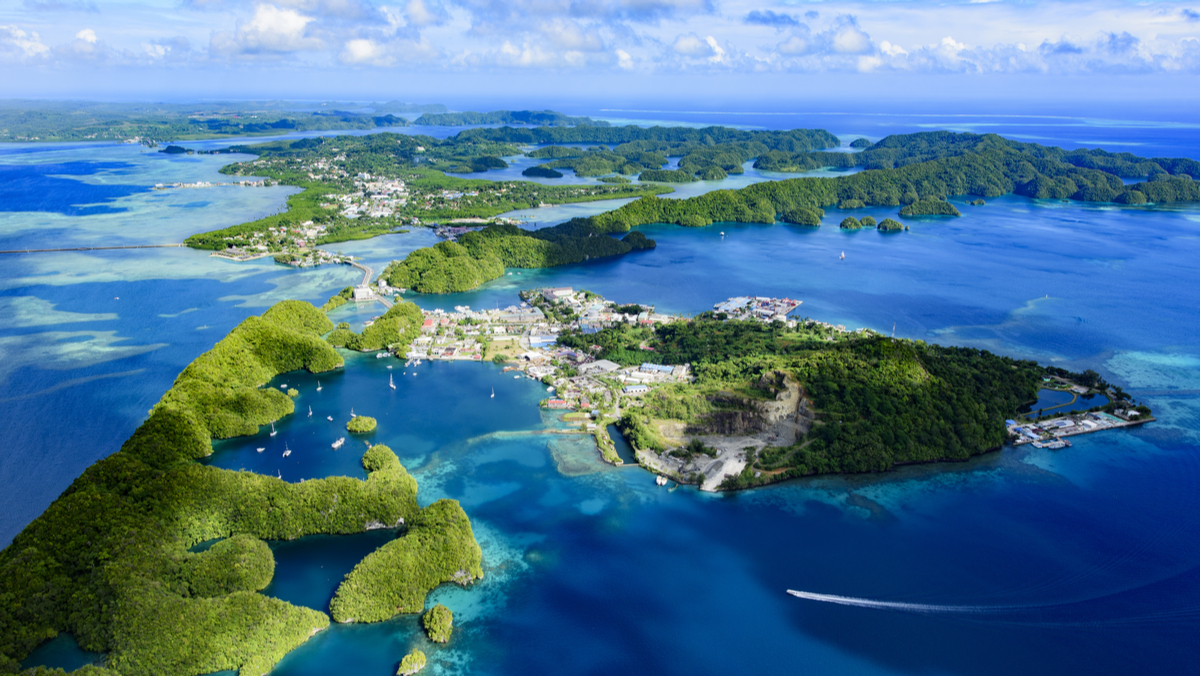
 This scenically magical place surely packs a punch and is our numero uno diving choice in the world. Sitting pretty in the middle of natural wonders is a tiny strip of land surrounded by water on all sides. Once there, you will understand why Palau holds the reputation of being the best in the world of diving
This scenically magical place surely packs a punch and is our numero uno diving choice in the world. Sitting pretty in the middle of natural wonders is a tiny strip of land surrounded by water on all sides. Once there, you will understand why Palau holds the reputation of being the best in the world of diving
Dive Deep: Most Popular Dive Sites
- Blue Corner is the most preferred and most popular dive site in Palau. As many times you take a dip here, you will have a different experience every single time. Expect to see sharks, snappers, jacks, chevron barracuda, tuna, hawksbill turtles to name just a few.
- German Channel – This famous Palau location gets its name from the channel used during occupation by German forces in World War 2. You can expect manta rays, eagle rays, lots of grey reef sharks, white tip sharks and impressive schools of fish.
- Peleliu Wall – This was the sight of some of the most horrific fighting and suffering in World War II. This site is one that showcases all that is magnificent about diving in Palau. You might emerge from the water having witnessed a larger number of fish and sharks than you have ever seen before on a single dive, and be in a state of current-whipped delirium.
- The Big Drop Off – This drop-off is big. To many, this is considered one of the finest wall dives not only in Palau but in the world. You’ll be treated to thousands of little and large reef fish in the shallows, a wall bejewelled with spectacular sponges and corals and sharks out in the blue.
- The New Drop Off – As you make your way around the site, look out for grey reef sharks if you can see them through the cascading masses of pyramid butterflyfish, red-toothed triggerfish, various species of angelfish and yellowtail fusiliers.
What’s so special about it:
It is hard to pinpoint the best of Palau as it offers a mix of everything divers want to see and experience. From skimming past sharks and other big schools of fish to the very popular World War II wrecks, and abundant reefs. A dip in Palau and its chain of 200 islands will not disappoint you.
Best Time to Dive:
You can plan a dive in Palau anytime during the year. Lying in the western Pacific about 650 km to the southeast of the Philippines, the water temperature in Palau is constant almost throughout the year at about 29 to 30-degree celsius.
You don’t have to worry about visibility as well and that is another reason why Palau is the ideal diving destination. Except for the months from July to September, the visibility drops to 15 to 20m otherwise it is often around 40m or more.
You May Also Like: New Year Celebration in Hong Kong
10. Malaysia
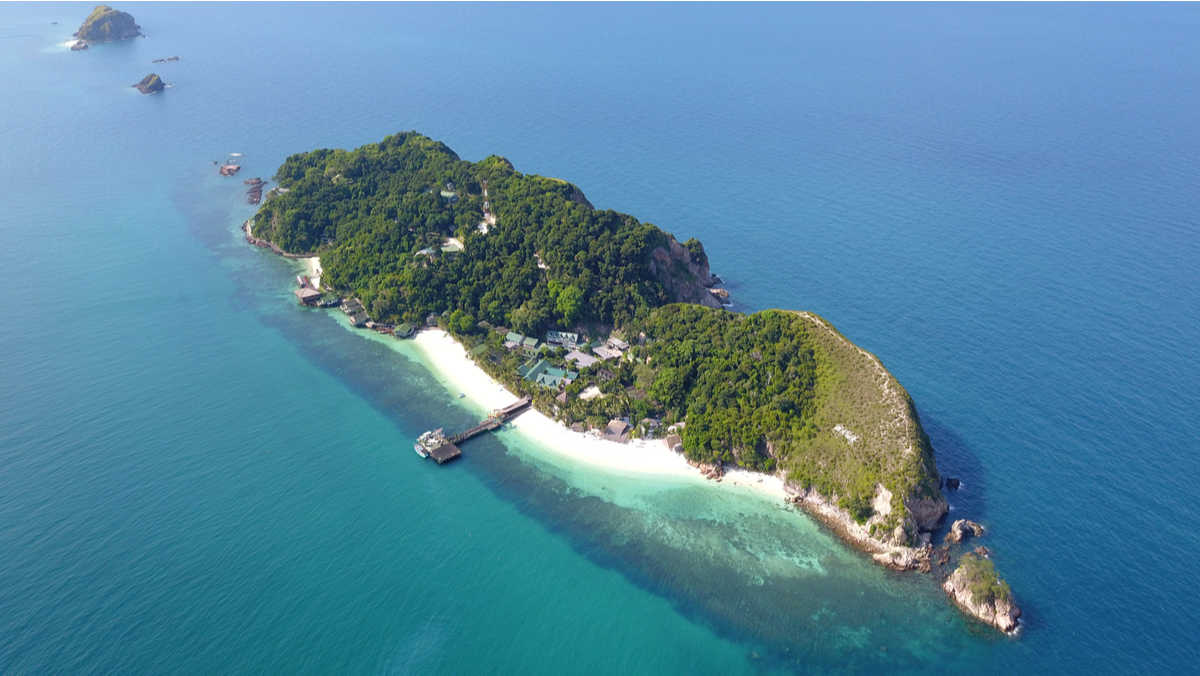
 With a coastline dotted with around 878 islands, Malaysia has some of the most exciting and diverse diving spots in the world. Explore some of the most exotic underwater species like Manta Rays, Reef Sharks, Turtles, Hammerhead Sharks, Mimic Octopus, Cuttlefish, Ornate Ghost Pipefish, etc.
With a coastline dotted with around 878 islands, Malaysia has some of the most exciting and diverse diving spots in the world. Explore some of the most exotic underwater species like Manta Rays, Reef Sharks, Turtles, Hammerhead Sharks, Mimic Octopus, Cuttlefish, Ornate Ghost Pipefish, etc.
Try wreck diving to find some sunken boats or macro photography as you muck dive to see the tiny and elusive seahorses, cowfish, and colorful corals.
Dive Deep: Most Popular Dive Sites
- Sipadan Island: Due to its unique geography, the island offers a stunning sudden wall drops & drift drives. Ranked amongst the top 10 diving destinations in the world, it is one of the rare places where you can spot enormous schools of spiralling barracuda, reef sharks, hammerheads, angelfish, triggerfish, and turtles all in a single dive!
- Mabul Island: Discover the thriving & camouflaged micro marine life in the seabed like crocodile fish, pipefish, mandarin fish, etc. at this site famous particularly for muck diving.
- Lankayan Island: See the sunken ship vessel at this famous wreck diving site as you swim alongside yellow pikes, bamboo sharks, mimic octopuses, and the rare ghost pipefish.
- Redang Island: A haven for coral diving enthusiasts, Redang has the largest coral gardens in Malaysia. Spot the rare mushroom corals, gorgonian sea fans, and sinularia corals housing green turtles, batfish, rabbitfish, and white-eyed moray eels.
What’s so special about it:
Besides the already famous diving spots letting the divers glimpse into its rare marine life, Malaysia has just joined the ranks of one of the 7 locations around the world having a rare ‘Blue Hole’. Discovered in 2019 near Sabah, it is an enormous coral sinkhole like an underwater cave with a surface side opening, that will provide a rare experience to adventure divers.
Best Time to Dive:
The best time to dive in Malaysia depends on the diving location that one chooses. Divided into two- the Malaysian Borneo comprising of islands like Sipadan and Mabul and Peninsular Malaysia featuring islands of Redang & Layakan, etc. they have different diving seasons.
July & August are the best months to dive in Borneo with maximum chances of spotting the fish and macro creatures. The peninsular region teems with marine life and maximum visibility from March to May.
Suggested Read: Must do Activities in Malaysia
